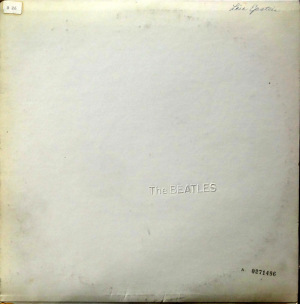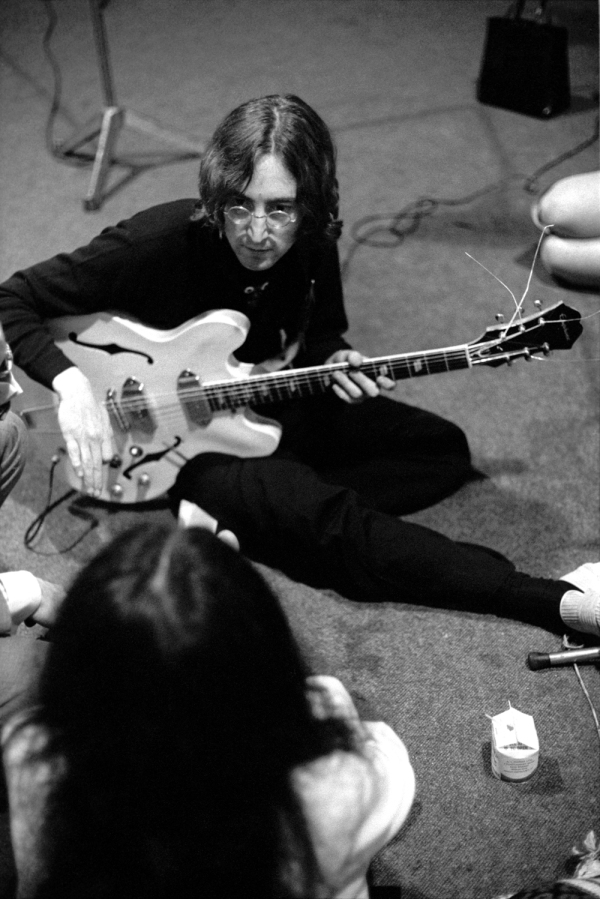THE NEW YORKER: To mark this month’s fiftieth anniversary of the Beatles’ ninth album, “The Beatles”—universally known as the White Album—several new expanded and enhanced editions are being released this week. These new versions were created under the supervision of Giles Martin, the son of the album’s original producer, George Martin. As was done last year with “Sgt. Pepper,” the new editions contain, along with a wealth of archival recordings and other material, a brand-new, digitally remixed presentation—a laborious retrieval and reassembly of the contents of the original multitrack master tapes, with a comprehensive scope far beyond that of all previous remasters and releases. The result reveals what might be called the greatest record ever made, not only in terms of its innovation and its strange, impenetrable, endlessly suggestive beauty but also because of its place at the apex of the Beatles’ career and its role as an aesthetic keystone for nearly all the rock-and-roll recordings that have followed.
Upon returning to England from Rishikesh, India, in April, 1968, John Lennon and George Harrison stripped and sanded the psychedelic paintwork off of their Gibson J-160E and Casino guitars; Donovan, one of the many musicians who had accompanied them to the Maharishi Mahesh Yogi’s ashram for an advanced transcendental-meditation course, had told them that this would improve the sound. “If you take the paint and varnish off  and get the bare wood,” Harrison explained later, “it seems to sort of breathe.” This stripping away of psychedelic symbolism was part of a larger campaign that the band undertook to remove the layers of Beatles mythology, habit, and convention that had accumulated since their beginnings, as Liverpool teen-agers—before Germany and America, before Astrid Kirchherr’s arty portraits had fetishized their mop-top haircuts, before Ed Sullivan and “A Hard Day’s Night,” and Shea Stadium, and the rest of it. Psychedelia, and the Beatles’ influential participation in it, had peaked with the release of their landmark 1967 album, “Sgt. Pepper’s Lonely Hearts Club Band,” the surrealist tracks on which had beguiled the world and, many said, inspired the Summer of Love. The American political theorist Langdon Winner observed, “The closest Western Civilization has come to unity since the Congress of Vienna in 1815 was the week the ‘Sgt. Pepper’ album was released. . . . At the time I happened to be driving across the country on Interstate 80; in each city where I stopped for gas or food—Laramie, Ogallala, Moline, South Bend—the melodies wafted in from some far-off transistor radio or portable hi-fi. It was the most amazing thing I’ve ever heard.” […]
and get the bare wood,” Harrison explained later, “it seems to sort of breathe.” This stripping away of psychedelic symbolism was part of a larger campaign that the band undertook to remove the layers of Beatles mythology, habit, and convention that had accumulated since their beginnings, as Liverpool teen-agers—before Germany and America, before Astrid Kirchherr’s arty portraits had fetishized their mop-top haircuts, before Ed Sullivan and “A Hard Day’s Night,” and Shea Stadium, and the rest of it. Psychedelia, and the Beatles’ influential participation in it, had peaked with the release of their landmark 1967 album, “Sgt. Pepper’s Lonely Hearts Club Band,” the surrealist tracks on which had beguiled the world and, many said, inspired the Summer of Love. The American political theorist Langdon Winner observed, “The closest Western Civilization has come to unity since the Congress of Vienna in 1815 was the week the ‘Sgt. Pepper’ album was released. . . . At the time I happened to be driving across the country on Interstate 80; in each city where I stopped for gas or food—Laramie, Ogallala, Moline, South Bend—the melodies wafted in from some far-off transistor radio or portable hi-fi. It was the most amazing thing I’ve ever heard.” […]
“The Beatles” is as much a concept album as “Sgt. Pepper,” and the concept is, again, right in the title: a top-to-bottom reinvention of the band as pure abstraction, the two discs, like stone tablets, delivering a new order. (“By packaging 30 new songs in a plain white jacket, so sparsely decorated as to suggest censorship,” Richard Goldstein wrote in his New York Times review, “the Beatles ask us to drop our preconceptions about their ‘evolution’ and to hark back.”) The songs progress through a spectral, mystical, and romantic dimension, the soundscape itself becoming fluid and associative. The Beatles’ ability to conjure orchestras and horns and sound effects and choirs out of thin air imbues the tracks with a dream logic. The juxtaposition of order and disorder, of the ragged and the smooth, of the sublime and the mundane, of the meticulously arranged and the carelessly misplayed, provides what the critic John Harris called “the sense of a world moving beyond rational explanation.” The music seemed to absorb the panic and violence of 1968, the “year of the barricades.” As the Sunday Times critic commented, “Musically, there is beauty, horror, surprise, chaos, order; and that is the world, and that is what the Beatles are on about: created by, creating for, their age.” MORE
The Beatles – Back in the USSR

